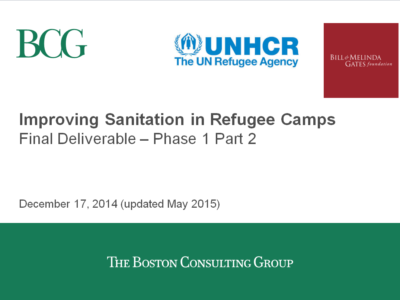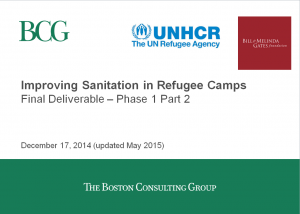
| Version | |
| Download | 42 |
| Stock | |
| Total Files | 1 |
| Size | 7.67 MB |
| Create Date | September 22, 2015 |
| Last Updated | April 7, 2016 |
Publisher: UNHCR / Boston Consulting Group
Year: 2015
Description:
The report examines the feasibility of a wide range of standard sanitation technologies in addition to sanitation innovations in refugee contexts (including miniaturized biogas, reinvented toilets, new processor technologies, SMS dispatching, pay per use toilets, sale of by-products). Technologies were evaluated based on upfront investment cost; technology viability, suitable size and transportability; flexibility and resilience; and value for money. The conclusions were as follows....
- All innovative sanitation solutions studied were more expensive than basic pit latrines with the exception of sanivation.
- When soil conditions were hard or water tables were high, household biogas and household UDDTs were more sustainable.
- UDDT to briquettes can be even lower than the basic pit latrine if the collection system is stable.
- For UNHCR to implement innovative technologies and delivery models a change in the donor funding approach is needed with a focus on planning for a 10 year horizon for refugee contexts rather than high initial emergency phase spending.
| File | Action |
|---|---|
| Improving Sanitation in Refugee Camps (UNHCR/ BCG 2015) | Download |
 English
English
